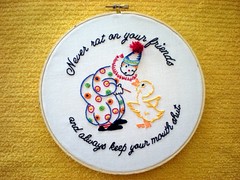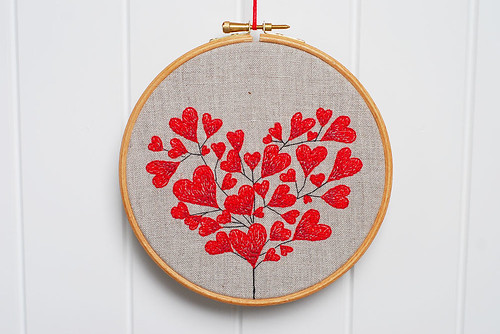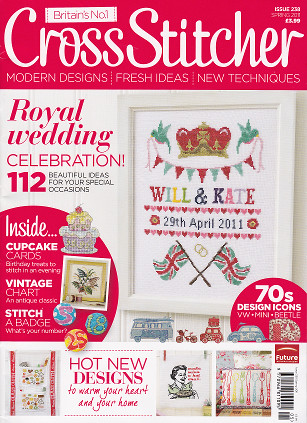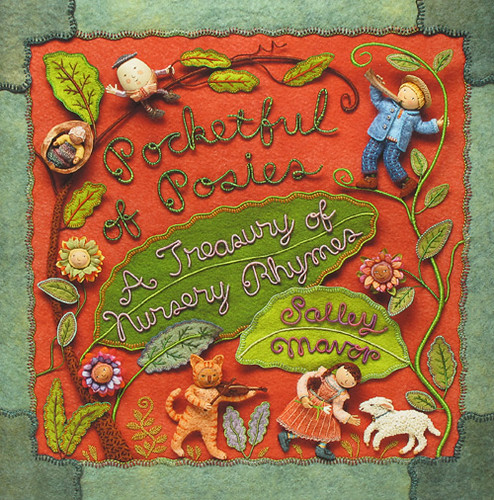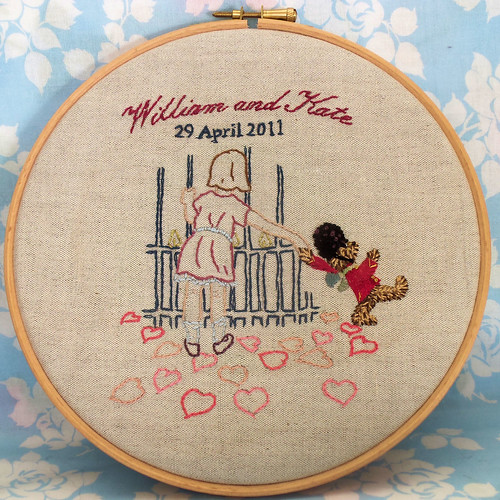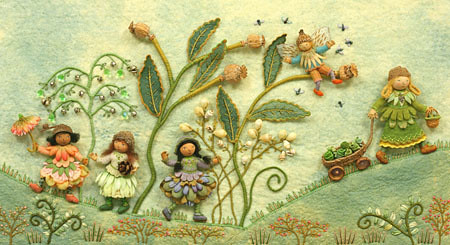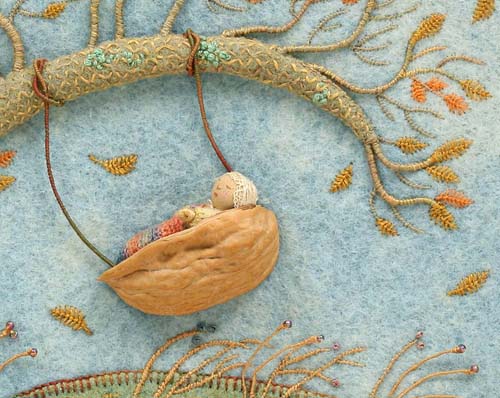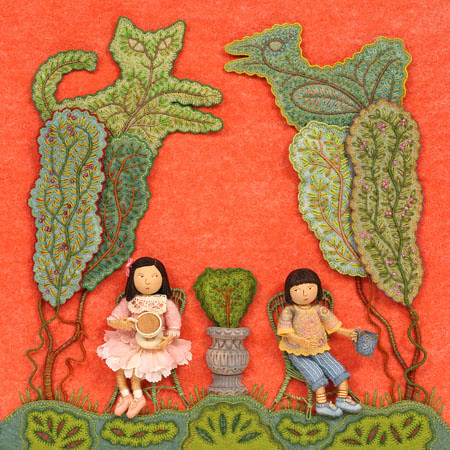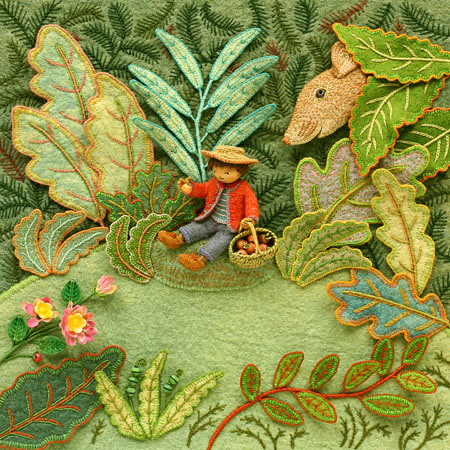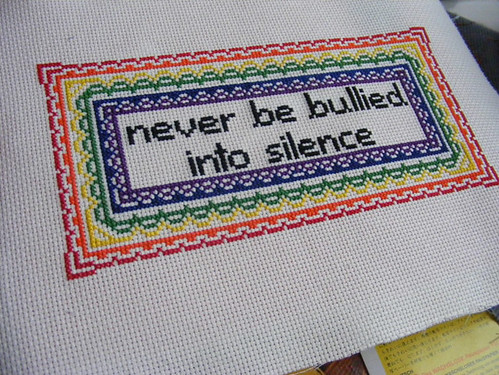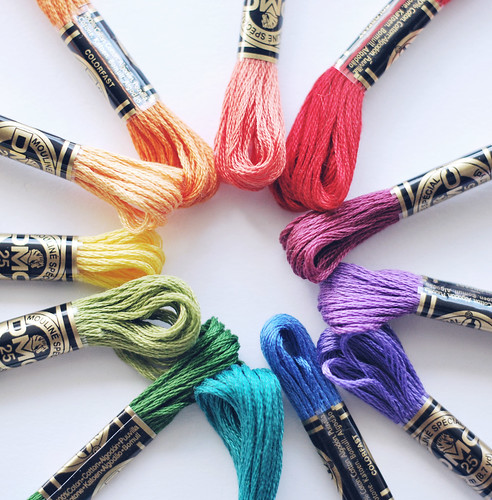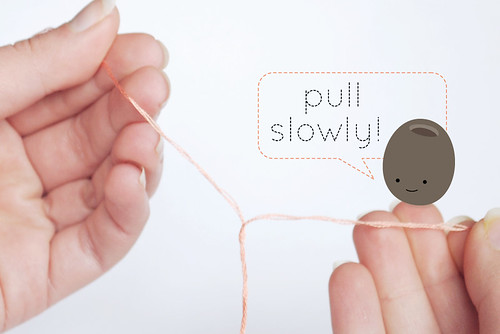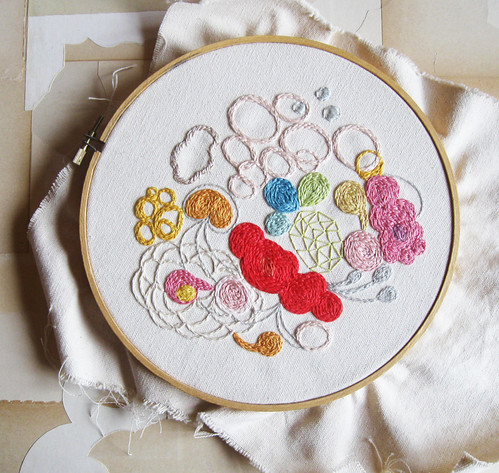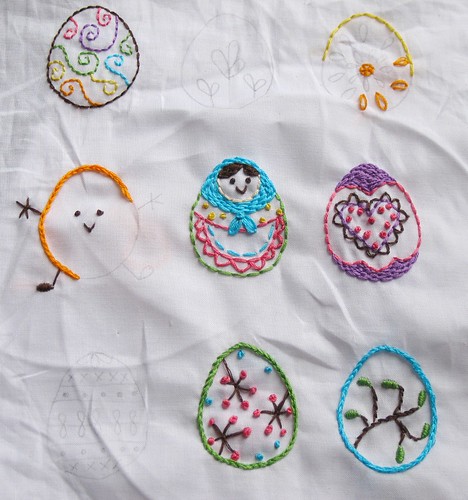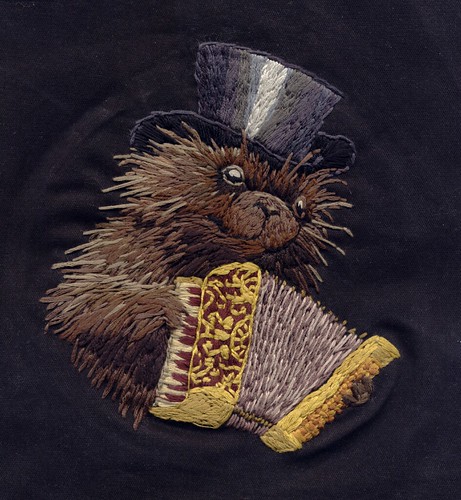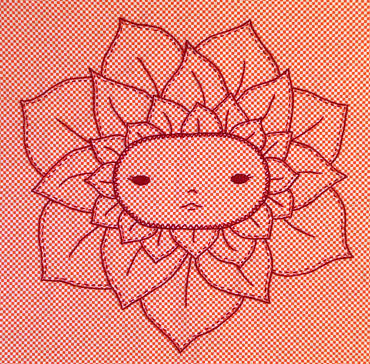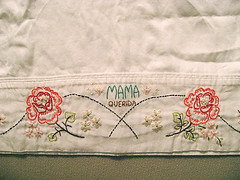I was instantly inspired by Salley Mavor's
Pocketful of Posies: A Treasury of Nursery Rhymes - pretty much the second I opened the book

. On the inside covers you see intricate chain-stitched shapes on light green felt - creatures, houses, hearts, leaves and symbols that look deceptively simple - it's only on closer inspection that you appreciate how meticulously they are stitched. I decided that's an apt description for all of Salley Mavor's illustrations - deceptively simple in their loveliness - in reality they reflect hours of construction and and intricate layers of beading, stitching, and imaginative three-dimensional elements.
Pocketful of Posies is a children's book illustrated with Salley Mavor's felt and fabric art, but it's so beautifully illustrated I could see this in the library of any crafter or stitcher. I can see myself thumbing through these pages every time I need some inspiration. But now - it could be
you thumbing through these pages - Salley was kind enough to share a copy of this book with us - and I'd like to send it to one lucky FS reader!
Salley also took the time to answer some interview questions about her process and the things that inspire her...
How do you plan your projects? Do you sketch or paint or use some other art form to prepare?
Just like other illustrators who work in more traditional ways, I draw a layout of the book, making sketches of each page that show the general positioning of the subjects in the picture, leaving space for the type. I find the design phase to be the hardest and most cerebral part of the process. I’m glad when it’s done, because then I can get down to the more intuitive and enjoyable business of making. It’s thrilling to hold the materials and let my hands start forming the pictures.
Lately, I’ve been describing my work as part of a Slow Art Movement. Yes, its very time consuming and not very practical, but that is part of what attracts me to this way of working. I sew, wrap, embroider, carve and embellish in as many ways as I can think of—all by hand. I can’t really speed it up and machines are no help. Through the repetitive, tactile processes, I find a calm satisfaction that can help lead to effective problem solving. Each illustration requires figuring out something new, whether it is a way of constructing a driftwood house or making a tiny basket, so I need time to work things out.
Besides illustrating children’s books, I’ve also written the craft instructional book,
Felt Wee Folk: Enchanting Projects
, which shows how to make little dolls and other felt objects.
How thoroughly do you plan? For instance, do you "know" exactly what will be in each piece or do you find "surprises" happen?
I find that welcoming found objects into my work can become a trap. Some very interesting looking things sometimes seduce me into thinking they belong in a picture. Later, if it doesn’t contribute to the story, I’ll have to make the painful decision to kick it out. That’s hard, especially when I really like the object. Writer friends tell me that they encounter something similar in their writing. They have to get rid of clever characters, witty dialog or funny situations that seemed perfect earlier. We agree that it’s all part of the creative process, but you have to be willing to see the imposter for what it is.
I’ve worked with several editors over the years, each one with their own comfort level of control and have found that my way of working requires flexibility. I work best with trusting editors who leave me alone for long periods—sometimes a year at a time. I’ve never been very open to a micro-managed style of direction and this has caused problems in the past. I need freedom to experiment and I realize that editors take a chance with me. There will be surprises and changes in my finishes, but hopefully we can agree that the results are worth the uncertainty.
What's your ideal setting to create in? Do music, tv, or movies inspire you or do you need a quiet studio?
I am most productive in my studio, with either music or the radio playing. I can also listen to recordings of books, but I can’t ever seem to get that organized. I can’t watch anything while I work—the visuals are too distracting. Since I work in the evenings, I haven’t watched TV in decades. Most creative people I know watch very little or no TV—they’d rather be making something.
Do you have a favorite stitch? What type of threads do you use (DMC or other?)
I find that I can sew what I want with just a few stitches. The blanket stitch makes a nice edging and the chain stitch is good for writing lines and doodling designs. I use French knots quite often to fill in a spot with texture and a kind of daisy petal stitch for leaves. I mostly use DMC thread and have lately been having fun with their variegated thread, which gives a changeable, organic look. DMC Flower Thread is a nice thicker cotton, but they no longer make it. I’m still using my stash. The Caron Collection makes beautifully hued pima cotton, called Watercolours, that comes in all kinds of variegated color combinations.
Do you have a favorite piece from Pocketful of Posies? If so, why?
I like the illustrations from
Hush-a-bye-baby and
Molly, my sister, and I because of the composition, colors and mood they create. I really liked making the baby’s cradle out of a walnut shell and the cat and bird topiaries.
What do you find most inspiring - the creative process (being in the middle of your work) or looking at the finished product?
People often ask how long it takes to make an illustration, but I’m not really sure, because time disappears when I’m working. I know that it takes between 2 to 4 weeks per picture, but as to the hours, I don’t keep track. My husband, Rob says that when I’m not eating or sleeping, I’m working in my studio. Of course, this is not entirely accurate, but it’s close to the truth. I admit to being obsessed with making things, as I believe are most artists. Holding a threaded needle is my default position.
I am most happy when working on a piece and am not particularly attached to the finished artwork. I keep a few originals, but sell most of my work. I like to see the pieces going out into the world, creating space at home to fill with new artwork!
How do you inspire yourself to work consistently on a project? Is that a challenge, or does it come naturally to you?
The act of making comes naturally to me and the challenge comes when I have to balance my responsibilities with the overwhelming desire to work on my artwork. Being married and having children has helped me find equilibrium in my life and forced me to come out of my cocoon.
It took 5 years for Pocketful of Posies to go from early sketches to the final production stage. For three of those years, I stitched and assembled the 51 nursery rhyme illustrations. What kept me going was the challenge and excitement of bringing so many stories and characters to life. I could concentrate a lot of energy into each picture and make bold design decisions. I was determined that every rhyme would have the love and attention it deserved.
What advice would you give to a fabric artist who would like to have an art or children's book published?
To artists who work in fabric, I would say that your portfolio should show how your work reproduces onto the printed page. Include good quality, well lit photographs that bring out the unique appeal of what you make. As in any medium, publishers want to see that you can create engaging, active characters in environments that children understand. Make sure that the photos bring out the details of your work. Don’t make your originals much bigger than the printed size, because the textural quality is lost in the reproduction. Have your photos show the raised texture and sculptural quality of your medium. Otherwise, you may as well be working in paper collage or paint.
Bringing characters to life is key to successfully illustrating a story. Join the
Society of Children’s Book Writers and Illustrators to learn as much as you can about making books and preparing your ideas.
I would also say that your work cannot stand on originality alone, that you should aim to reach beyond the technique and concentrate on telling a story in a visual way, with as much feeling as possible. Just remember that it’s not the medium, it’s the message. After all, it is a great responsibility to reach out and connect with children.
Do you have any upcoming exhibits or shows?
The original illustrations from Pocketful of Posies are currently touring and will be displayed at various locations around the country through Dec. 2013. The next show will be in Iowa at the
Muscatine Art Center from April 23 – June 19, 2011. I will be giving a workshop and talk in Muscatine the weekend of May 21-22. The exhibit schedule is frequently updated
on my blog.
------
Thanks, Salley - it was truly an honor to feature your work and interview you! For more information on Salley,
visit her blog.
Want a copy of
Pocketful of Posies? This giveaway is open to all FS readers -
to enter, leave a comment here and tell us your favorite stitch! Comments will be closed on Monday, 4/18 at 6:00 PM, Central Time, and a random winner will be announced soon after.
